When a review opportunity for Hewitt Homeschooling Resources came up, I was hesitant at first. One of my friends uses their curriculum to teach high school English at a local homeschool hybrid school. She advised that their courses effectively teach literary analysis but may not provide enough writing instruction. Should we take the plunge anyway? My daughter would make the final decision.
Skeptically, I sat down with her and looked at some of the sample pages. Since she is not a fan of English, I expected her to take one look at the curriculum and reject it. She didn’t. As we examined the various high school options, she gravitated to the American Early-Mid 19th Century Lightning Lit course.
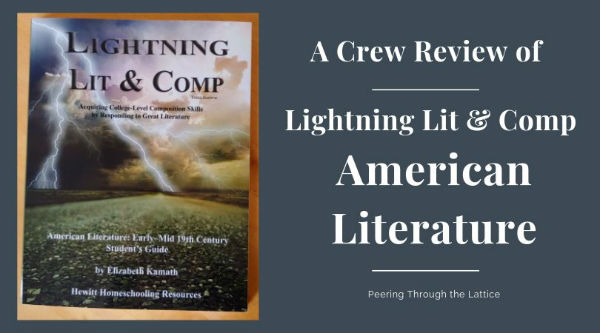
Knowing she would need to study American Literature at some point, she reasoned, why not use this? It would complement the US History course she was wrapping up. To finish out our homeschool year, she could complete the first six weeks of American Lit.
Getting Started
I’m thankful that this curriculum is designed for students to use independently. When it arrived, I was busy teaching the twins. I handed the Student’s Guide to my daughter, briefly showed her the recommended schedule in the back of the book, and let her loose. With clear expectations for each week’s assignments, she could work independently.

What’s inside the Student’s Guide?
The Student’s Guide contains four units of instruction which help high school students explore the literature of early America.

Each lesson contains general readings. Some outline the writing process. Others introduce the type of literature or discuss literary terms such as conflict.
There is even a short biography of each significant author. Although four separate books are required to complete the curriculum, the Student’s Guide includes all of the poetry and short stories.

After reading each literary work, students complete comprehension questions and writing assignments.

The book’s Appendix includes discussion questions, project ideas, and related literature students may wish to read. There are also schedules for completing the course in a semester or a year.
How Helpful is the Teacher’s Guide?
The Teacher’s Guide is a packet of pages stapled together.
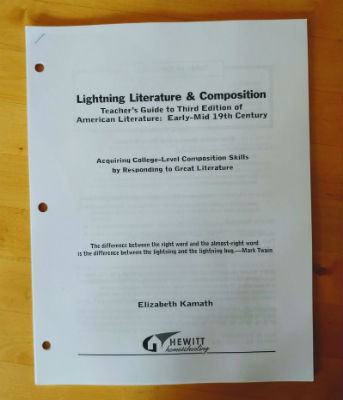
Although it may not look like much, it’s full of writing checklists, grading tips and templates, and answers to the comprehension questions. It also includes the schedule, writing assignments, discussion questions and project ideas from the Student’s Guide. It was nice to have my own copy to refer to.
What We Used
Comprehension Questions
In a perfect world, I would have read the books alongside my daughter, and we could hold deep Socratic discussions about them. Of course, no homeschool is perfect. Did I have time to read the books? No. Honestly, I read a page or two of Ben Franklin’s Autobiography, but that’s as far as I got.
My daughter read two books as well as a few poems and short stories. Each week, she answered the comprehension questions in the Student’s Guide. I don’t think it is intended to be used as a workbook, but she wrote her answers in it anyway.
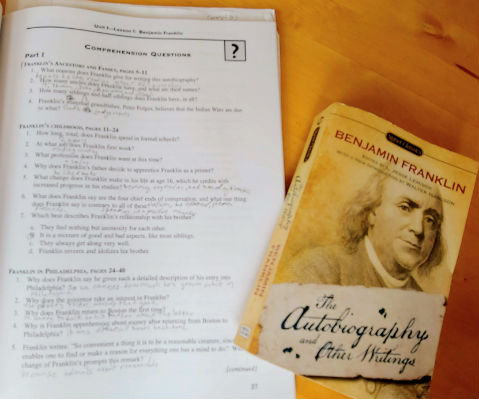
”I like that there wasn’t too much reading and that it was pretty easy to complete.”
~My high school daughter
When she had completed the questions, I looked over her work. I compared her answers to those in the Teacher’s Guide. Most were pretty straightforward, but there were a few that she answered differently or was not sure how to answer. We discussed those questions together.
Weekly Writing Assignments
Each week, my daughter also completed a writing assignment. She enjoyed the freedom of being able to select from a list of writing prompts. While reading Franklin’s Autobiography, she wrote about one of her hobbies. The following week, she wrote about a moral quality both she and Franklin believe it’s important to possess.
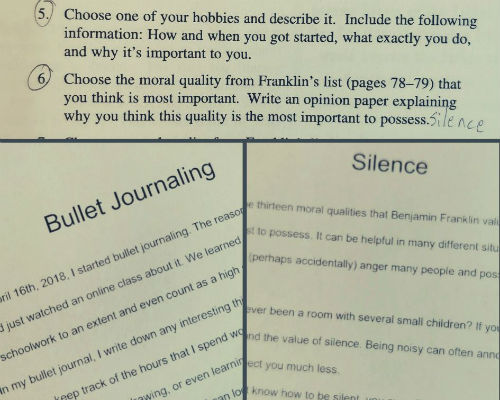
After reading “The Angler” by Washington Irving, she created her own list of 50 writing prompts. To conclude the poetry unit, she composed a two-stanza poem. She responded to the Narrative of the Life of Frederick Douglass by writing a persuasive paper. Her topic: “Why Cats are Better than Dogs.”
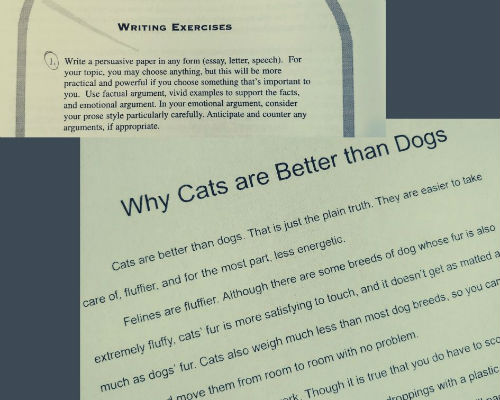
”I like that you could choose from a list of different writing assignments instead of having to do a certain one.”
~My high school daughter
Even though writing is not her favorite pastime, I could tell she enjoyed responding to literature this way. Initially, she handwrote the assignments. I insisted that she type her final drafts.

The writing checklists and grading templates in the Teacher’s Guide are invaluable. Looking at them, I realized that grading my daughter’s assignments should be simple.

Writing Hiccups
If I had given her a copy of the checklists before she started writing, the grading process may have been as simple as I anticipated. But it wasn’t.
When my daughter handed in her “final drafts,” I realized significant editing would be necessary. Unwilling to be the “bad guy,” I asked her to go over her assignments with my husband. I didn’t relish the inevitable debate that would arise when I pointed out problems.
Seeking an alternative of her own, my high schooler asked if her older sister could help edit her work instead. After considering her request for a few minutes, I conceded.
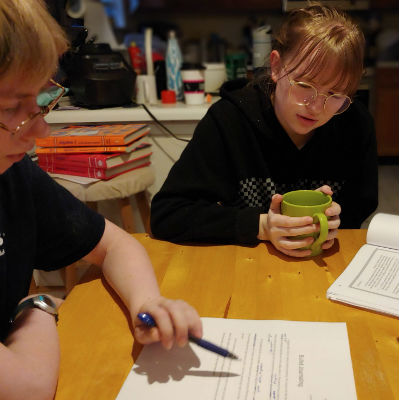
It was a brilliant idea. I listened from across the room as my oldest daughter carefully critiqued her sister’s work. For an hour or more, they carefully picked apart her “completed” assignments. Later, my daughter made corrections and submitted her improved papers for grading.
What We Skipped
The Lightning Lit & Comp course suggests that students list unfamiliar words in a vocabulary notebook. After writing a definition that fits the context for each word, they should also use that word in a sentence. I completely overlooked this component. Of course, my daughter insisted that she was familiar with all of the words in her readings. Despite my doubts, I let this one slide.
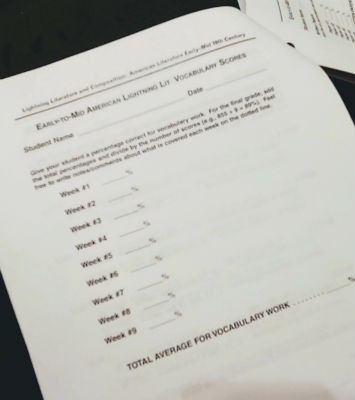
Since I did not read the books myself, we did not use the Discussion Questions in the Appendix either. They could certainly help foster deep discussions, especially among multiple children.
Our Verdict
The first six weeks of American Lit worked pretty well for my daughter, but she is not planning to continue the course in the fall. Parts of it were boring for her, but then again, she much prefers history to literature. Even so, she attests, “Most of it was fine.”
Although the curriculum is easy for students to work through independently, parents need to be prepared to fill in any gaps. Students who struggle with writing may need additional instruction, though strong writers can shine.
Overall, Lightning Lit & Comp from Hewitt Homeschooling Resources is simple and easy-to-use. Compared to the literature-rich program we were using last fall, this one required significantly less work, making it more manageable for mother and daughter. Despite my earlier reservations, I’m pleased to be able to recommend it.
Hewitt Homeschooling Resources publishes curriculum for all grade levels. This time around, the Crew reviewed 19 of their products. As you are choosing curriculum for next year, be sure to click over to the Crew website to read additional reviews.
